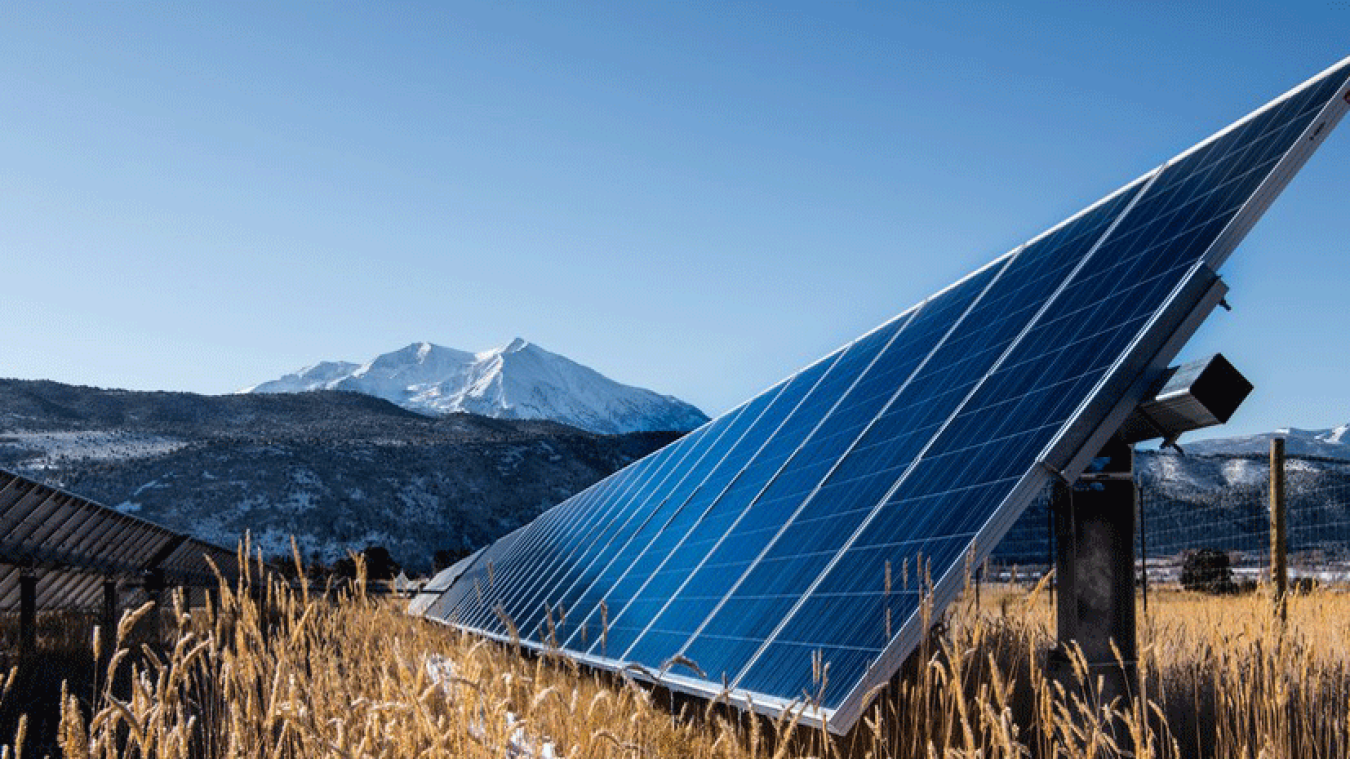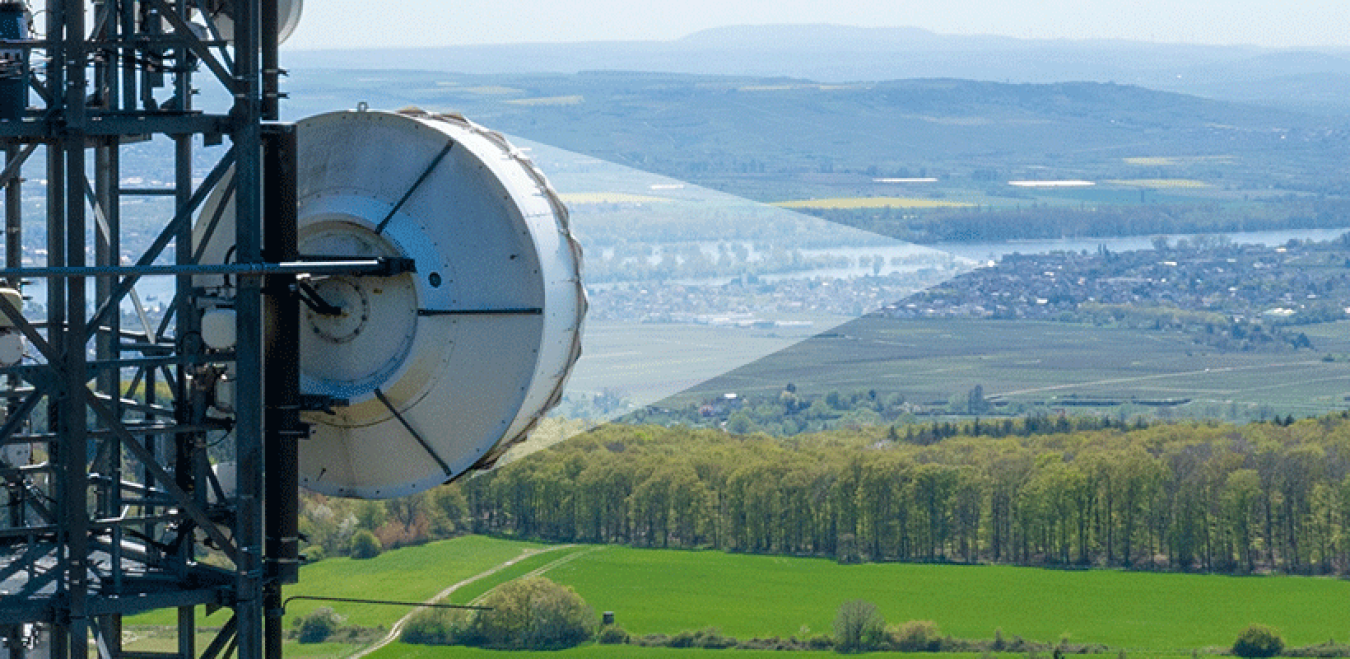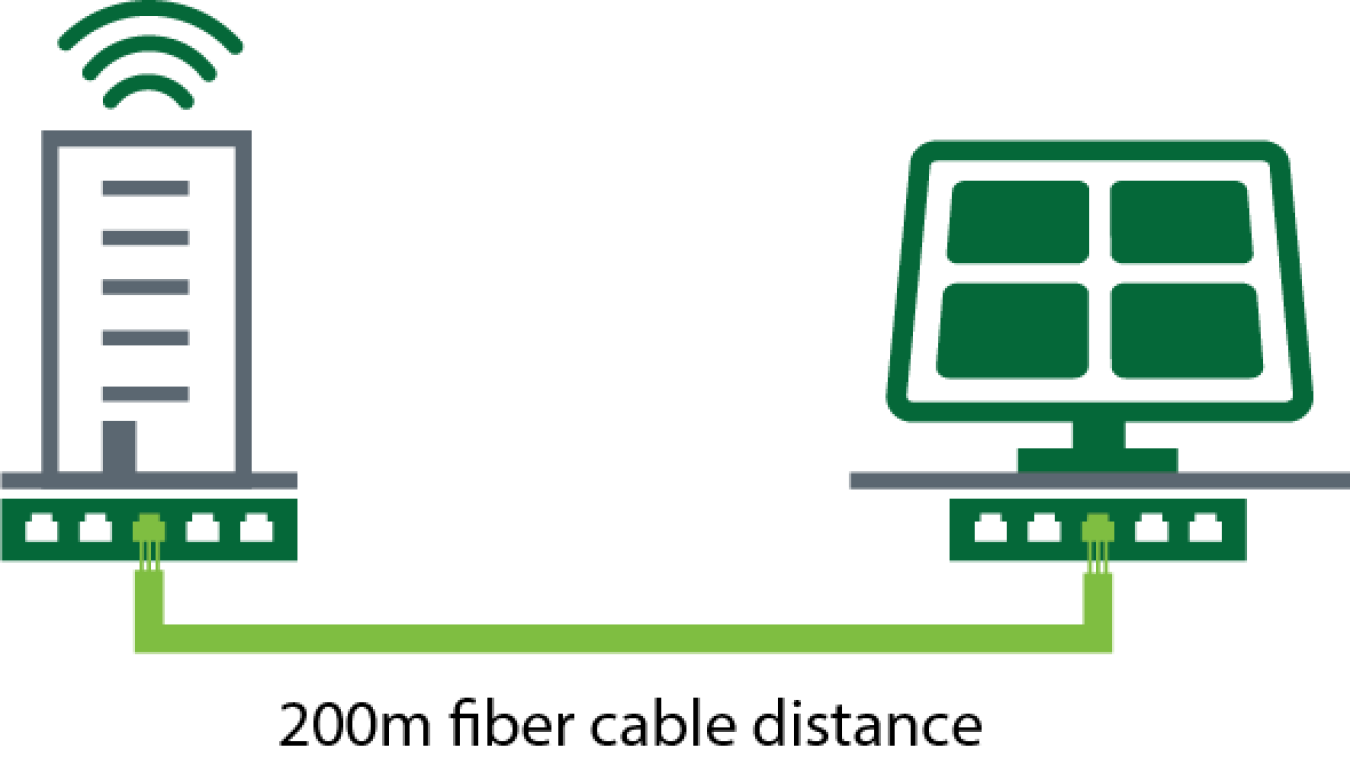Metering energy generation for any solar photovoltaic system is critical to operations and maintenance. Recording and viewing production data is important to ensure good performance and is a means to assess a system's need for critical maintenance.
Without advanced or standard metering, a site would not be notified if the system is offline or if production drops significantly, which could present serious life-safety concerns. Metering solar photovoltaic (PV) systems in remote locations is even more critical as these assets are located in less-trafficked areas and may receive fewer visits from operations and maintenance (O&M) personnel.
FEMP's resource, Monitoring Platforms for Solar PV, covers how to measure PV performance and optimize it with an O&M plan.
What is a Remote Site Network Connection?
It is a communications link or media (either wired or wireless) to a remote location for the purposes of connecting end-use appliances (e.g., computers, telephones, meters, alarms, and building automation systems) to a physical coupling point where access to the internet can be established.
Establishing a Network Connection Between the Meter and the Internet
The goal should be to establish a connection between the solar PV meter and the internet through a cyber-secure remote site network connection.
The meter systems should have an Authority to Operate (ATO) based on the agency's cybersecurity requirements. Once the cyber-secure meter is connected to the internet, then an agency can retrieve the data.
Some agencies use third-party-owned cloud platforms with a valid ATO while others host metering software and data storage hardware at a regional or headquarters office.
Some agencies have chosen to utilize the meter data storage and display features that are part of an existing building management system (BMS) or the building automation system (BAS). Most BMS or BAS system brands offer this functionality.
Cybersecurity
Agencies should consult with their Cybersecurity Information Security Officer (CISO) and Chief Information Officer (CIO) to ensure compliance with federal and agency requirements.
At some sites, gaining access to the internet can be done by connecting to an existing cyber-secure network established at a building located on the same property.
Power meters don't require high-speed connections as the typical transmission of power data amounts to small file sizes. A power meter has an average file size of 250KB, which is several orders of magnitude smaller than a typical one-minute video file (~100 MB).
Remote Network Option Site Assessment Level of Difficulty Approximate Costs* Key Issues Cellular—Strong Signal Strength Easy to self-perform Easy $200 hardware
$15-$50/monthlyCoverage Cellular—Weak Signal Strength Can self-perform but better results with expert Moderate to complex Possibly multiple $K hardware
$15-$50/monthlyMust have at least a weak signal Satellite Easy to self-perform Moderate $2,500 hardware
$500/monthlyMonthly data limits with one vendor.
Many areas with no coverageMicrowave** Vendor or consultant required Complex Highly variable hardware costs
$200/monthlyPoint-to-point so could be limited depending on topography. Certification of radio equipment and frequency ranges Power Line Easy to self-perform Easy Variable hardware costs and low monthly utility transmission fees Coverage during storms; coordination with utilities and power line owners Radio Relay System Vendor or consultant required Complex Highly variable hardware costs
less than $200/monthlyPoint-to-point so could be limited depending on topography. Certification of radio equipment and frequency ranges Dark fiber cabling Vendor or consultant required Easy to Moderate Variable hardware costs
less than $200/monthlyDepends on the presence of existing dark fiber Fiber optic cabling** Vendor or consultant required Complex Highly variable hardware costs
$200/monthlyDepends on the presence of existing poles or nearby building *Prices shown on retailer websites. Costs change often so new prices should be obtained from vendors to do a current comparison.
**Can be used to connect to an offsite service provider or to an onsite building that has existing internet access.




